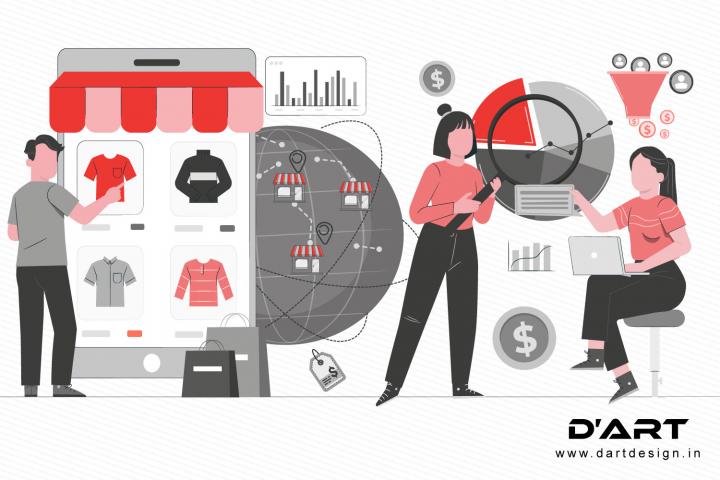Notifications

With the rise of Big Data, the need to segment your market has become more important than ever. With emerging technologies at our fingertips, we can now see that living in a community or a small business is no longer the only way to live. It has changed the whole lifestyle and the market is growing rapidly.
Over the years, market segmentation has emerged as one of the most powerful tools for business managers, marketing professionals, and global retail design agencies alike. If we go by the definition market segmentation helps in understanding the behavior and preferences of a market group and can be used to identify customers most likely to benefit from particular product offerings, define target customers by their demographics, and design policies and strategies tailored to these segments.
Segmentation is a key strategic process for customer acquisition and retention. Therefore, it is important to learn how to segment customers which can provide the most precise customer satisfaction index of the market. In this way, brands can improve their conversion, and build better relationships with their customers when targeting groups more accurately depending upon interest, needs, and so on.
Marketers have used segmentation to identify, understand, and reach customers based on differences in their needs, lifestyles, perceptions, and behaviors, with companies using it to achieve different business goals. To encapsulate: Simply identify and target the right customers, optimize the sales channel, segment markets based on price sensitivity, and more, could be one way to look at it.
Market segmentation can be a complicated task; however, many successful companies use just as complex methods to analyze data and arrive at final insights that drive product development, pricing, and marketing decisions.
Furthermore, through data and intelligence find patterns and predict outcomes based on that very data. Sometimes, it is not about what you know about the person or business. It’s about what people do as they interact and engage.
Performing customer segmentation through machine learning and data allows brands to identify the profiles of the customer who are more likely to adopt a brand’s products and services. It can also help the brand in optimizing limited resources. With data and machines, learning brands can find patterns and predict better outcomes.
In 2022, the research indicates that there has been a shift in consumer behavior towards an alternative lifestyle in their personal lives. This has led to a variety of new innovations where personal data is used carefully and strategically by brands to create a personalized experience for each customer. In this environment it is no surprise that TTL marketing is rising as the go-to solution when reaching the individual customer is the priority. Further research also points to the fact that there has been an increase in personalization across product categories which has led to significant growth in the market for intelligent products that can adapt to their user's needs and create personalized experiences for each customer.
When artificial intelligence learns data and behavior, it gains the capability of performing tasks such as pattern recognition, predictive analytics, human-like communication and so much more. It is becoming an increasingly important element to understand the market space as it can help identify the hidden pattern in the customer’s behavior /demographics to make better product recommendations, optimize sales channels and drive customer acquisition.
Let us just look at the beauty industry, for instance. In 2022, the beauty industry looks as though it has shifted gears and is moving toward a more defined business model. More than ever before, consumers are seeking products that are both classic in character, modern in technology, and sustainable.
Being no longer the age of formulaic beauty and endless options. Consumers are looking for products that truly meet their needs while also standing apart from other similar competitors on the market shelf.
The emergence of a new generation of consumers, who prefer high-quality products over low-price ones and have a better awareness of the brand's values, has led to the need for companies to adapt their marketing strategies. Furthermore, innovative technologies are also playing a significant role in today's rapidly changing marketplace by transforming customer journeys, enhancing product quality, and lowering costs.
Markets have become increasingly fragmented and complex, requiring more careful segmentation than ever before. It is one of the key challenges companies face today: managing their market segments while also striving to reach new markets.
With advanced features and functionality, proper customer segmentation can help brands find ideal as well as potential customers. In addition to that using data and machine learning, brands can test thousands of factors and leverage heatmaps, virtual tours and social media feeds to attract their customers in the most powerful way.
Companies that want to expand their customer base, but do not want to lose the customers they already have. And a good segmentation strategy can help a customized approach for their customer that also matches brand values, and avoid wasting time and money trying to sell to people who don’t want them.
The goal is to create groups of customers who want and need similar things, but purchase or use those things in completely different ways. How customers differ, businesses can develop products and services that meet the needs of specific segments, rather than just focusing on the needs of all.
Having data can help businesses identify the right customers for brands. As it takes into account everything a customer has done, their preferences, needs, desires, likes, dislikes, and so on when comparing them to another customer. This means using artificial intelligence, appropriate data, and machine learning brands can create a perfect mix of features and target an audience with much less effort than ever before and yield transformative results.
But brands need to be mindful that it doesn't matter how much data you have if it can't be used to develop better products and services. Therefore, brands that are relying decisions on data need to recognize that the quality of data, not quantity, is what matters.